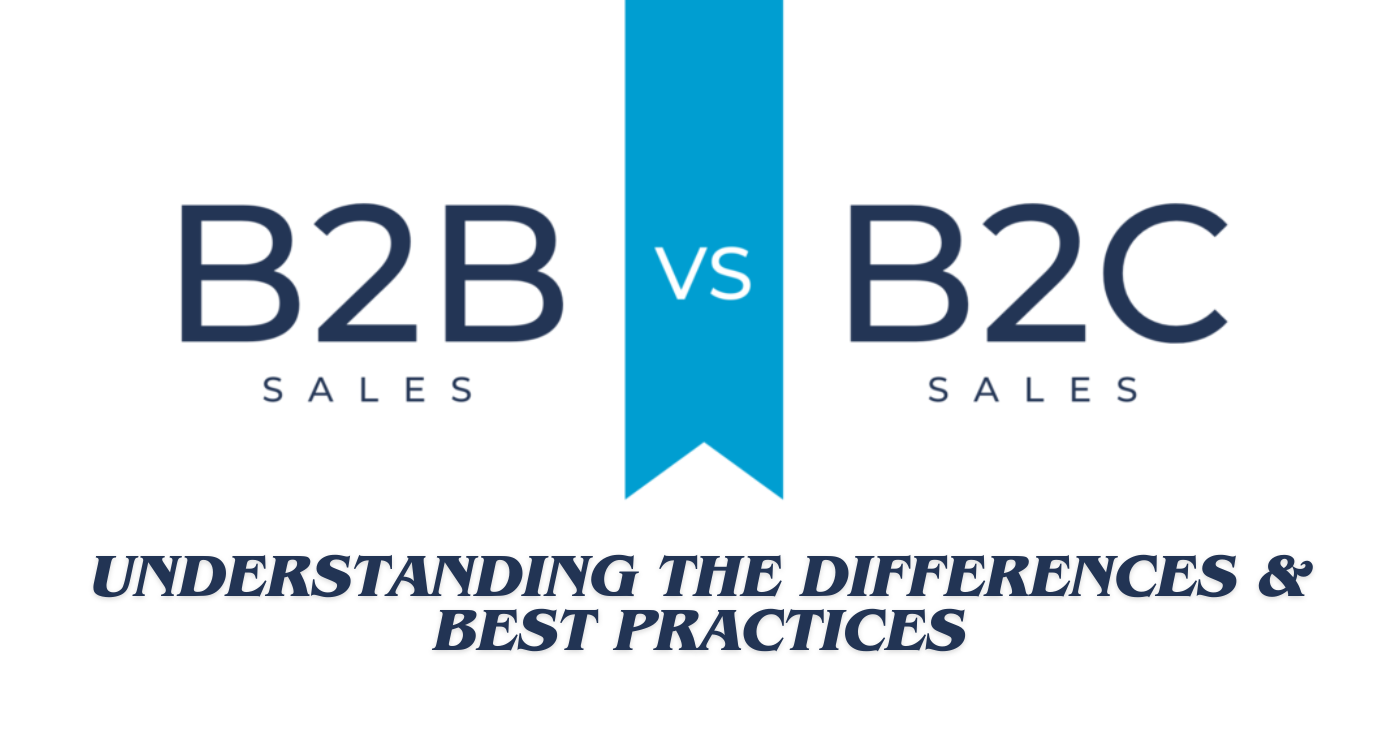Sales strategies vary depending on the type of customers a business serves. Business-to-Business (B2B) and Business-to-Consumer (B2C) sales operate under distinct models, requiring different approaches to communication, relationship-building, and decision-making. While both aim to generate revenue and drive customer engagement, the sales tactics that work for one may not be effective for the other.
In this article, we will explore the key differences between B2B and B2C sales and highlight best practices to maximize success in each sector.
1. Key Differences Between B2B and B2C Sales
While both B2B and B2C sales involve selling products or services, they target different audiences and follow unique sales processes. Below are the primary distinctions:
a) Target Audience
- B2B Sales: Involves selling to businesses, corporations, or organizations that use the product or service for operational needs. Buyers are often procurement teams, executives, or department heads.
- B2C Sales: Focuses on individual consumers who purchase products for personal use. The decision-making process is typically quick and influenced by emotions, brand reputation, and price.
b) Sales Cycle Length
- B2B: The sales cycle is longer due to multiple decision-makers and approval processes. It often involves in-depth negotiations, product demos, and contract discussions.
- B2C: Sales cycles are much shorter, with consumers making purchase decisions based on impulse, discounts, or marketing efforts.
c) Relationship-Building
- B2B: Building long-term relationships is crucial, as deals often involve repeat business, ongoing contracts, and customer support.
- B2C: While brand loyalty is important, individual transactions are usually one-time or occasional purchases.
d) Pricing & Order Size
- B2B: Pricing is typically higher, and transactions often involve bulk purchases or service subscriptions. Custom pricing and negotiation are common.
- B2C: Products are priced for mass-market appeal, and customers buy in smaller quantities. Pricing is generally fixed with occasional discounts.
e) Marketing & Communication
- B2B: Marketing efforts focus on education, data-driven decision-making, and ROI analysis. Content marketing, email campaigns, and LinkedIn networking are common strategies.
- B2C: Emotional appeal, visual storytelling, and social media play significant roles in marketing. TV ads, influencer partnerships, and online ads are effective tools.
2. Best Practices for B2B Sales
B2B sales require a strategic, relationship-driven approach. The focus is on solving business problems and demonstrating long-term value.
a) Invest in Sales Training
For sales teams to succeed in B2B environments, they must develop strong negotiation, communication, and consultative selling skills. Sales training in Mumbai helps representatives understand client pain points, tailor solutions, and close high-value deals. Training programs should emphasize relationship management, value-based selling, and objection handling to drive long-term partnerships.
b) Leverage Data & Analytics
B2B buyers expect a personalized experience backed by data. Utilizing customer analytics helps sales teams tailor their pitch based on industry trends, previous interactions, and business needs. CRM (Customer Relationship Management) software can help track leads, monitor engagement, and optimize follow-ups.
c) Focus on Thought Leadership
Establishing credibility is essential in B2B sales. Sales professionals should position themselves as industry experts by sharing valuable insights through blogs, webinars, and whitepapers. Thought leadership builds trust and makes prospects more receptive to conversations.
d) Strengthen Multi-Touchpoint Engagement
B2B sales require multiple touchpoints before closing a deal. A strategic mix of emails, phone calls, LinkedIn messages, and in-person meetings ensures continuous engagement and keeps prospects informed about the value proposition.
3. Best Practices for B2C Sales
B2C sales revolve around speed, convenience, and emotional appeal. Businesses must create compelling buying experiences to capture consumer interest.
a) Personalize the Customer Experience
Customers expect brands to understand their preferences and deliver relevant recommendations. Utilizing AI-driven personalization, targeted email campaigns, and customized promotions can increase conversion rates and foster brand loyalty.
b) Utilize Social Proof & Testimonials
Consumers trust peer recommendations and reviews. Showcasing positive customer testimonials, influencer endorsements, and user-generated content builds credibility and encourages hesitant buyers to make a purchase.
c) Optimize the Sales Funnel
B2C sales thrive on seamless purchasing experiences. Businesses should ensure that their websites and checkout processes are user-friendly, mobile-optimized, and fast. Reducing friction, such as lengthy forms or complicated payment processes, improves sales conversions.
d) Implement Urgency & Scarcity Tactics
Creating a sense of urgency encourages immediate action. Limited-time discounts, flash sales, and countdown timers can drive quicker purchase decisions. Customers are more likely to act when they fear missing out on a great deal.
4. The Role of Sales Training in Both B2B and B2C Success
Regardless of the sales model, investing in sales training is crucial for equipping teams with the skills needed to close deals effectively. Whether selling to businesses or consumers, sales professionals must refine their communication, persuasion, and problem-solving abilities.
Key Sales Training Focus Areas:
- Understanding Buyer Psychology: Tailoring messaging based on whether the buyer is a business decision-maker or an impulse-driven consumer.
- Building Rapport & Trust: Establishing credibility and maintaining positive customer relationships in both B2B and B2C contexts.
- Effective Closing Techniques: Learning proven strategies to handle objections, create value, and secure commitments.
By continuously refining sales strategies through professional development, businesses can stay competitive and adapt to changing market demands.
While B2B and B2C sales share common objectives, their approaches differ significantly. B2B sales demand a long-term, relationship-based strategy, while B2C sales thrive on emotional appeal and quick transactions. By understanding these differences and implementing best practices, sales teams can optimize their approach and achieve greater success.
Investing in sales training in Delhi ensures that professionals in both sectors stay ahead of industry trends, refine their techniques, and maximize revenue potential. Whether targeting businesses or consumers, mastering the right sales approach is the key to sustained growth and profitability.

